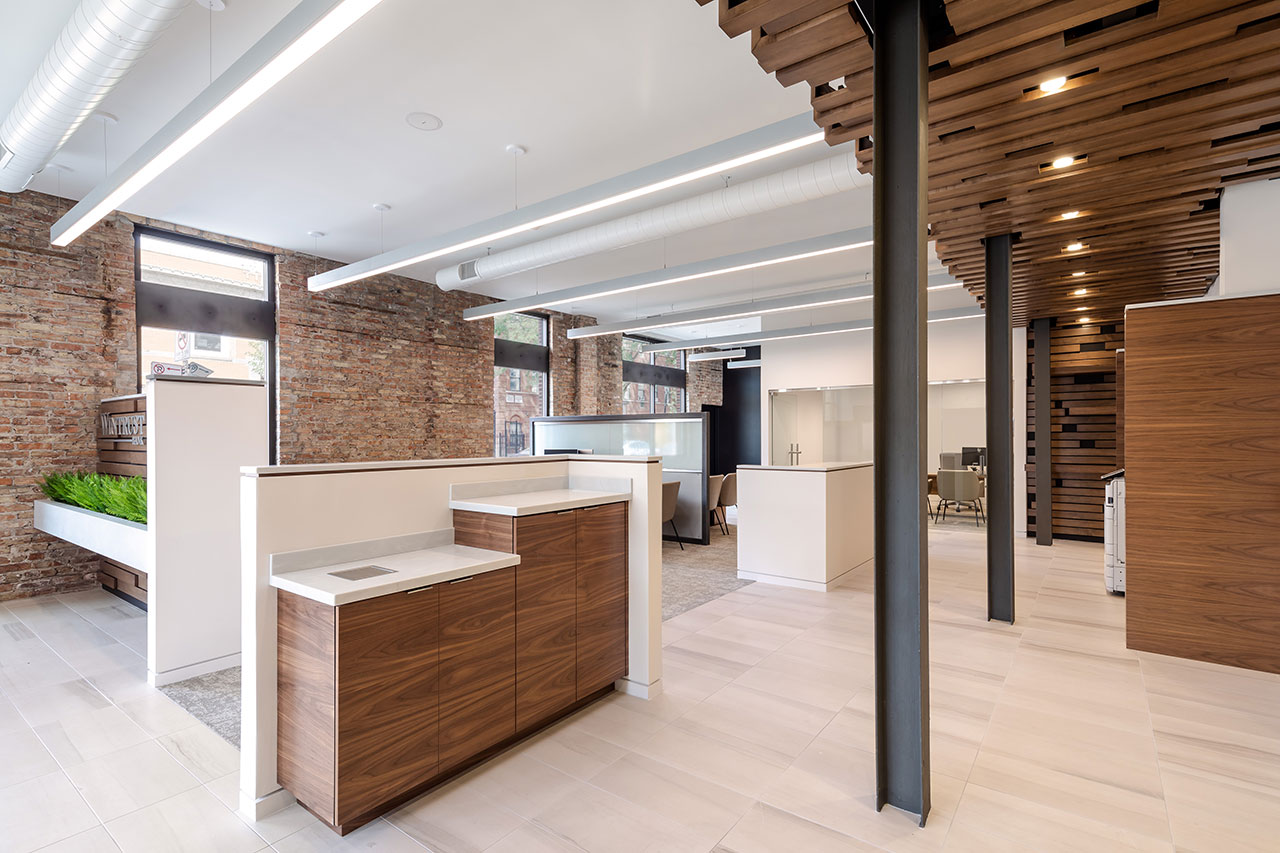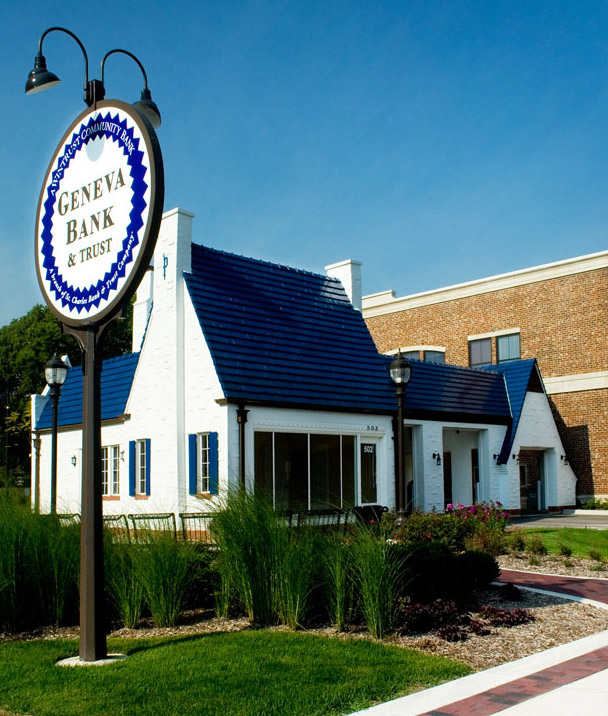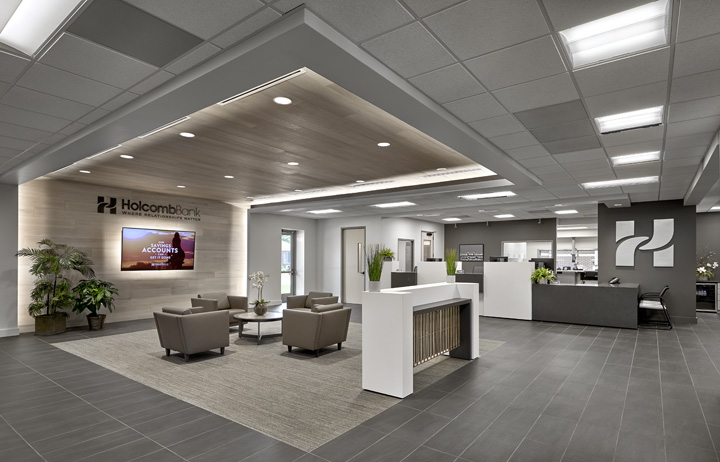

Today’s banking customers have more choices than ever. Online and app-based banking services now compete with mainstream corporate brands – both invest heavily in marketing and advertising. In spite of a saturated market, an under-the-radar category of competition in the financial services sector that still commands customer loyalty and market share is community banks (CBs). Smaller, localized, and often having just one or a few physical locations and limited digital presence, CBs offer a more personalized experience than the nationally known financial institutions can do.
While banks of all sizes are always trying to win new customers, community banks have the unique opportunity to differentiate through their friendlier, more neighborly atmosphere; and this, combined with the right architectural or interior design solution, can become a serious competitive advantage against bigger corporate names.
Post-Covid, at CVG Architects, we have seen CBs – both rural and urban – striving to attract new customers by conceptualizing new ways of making the customer experience more intuitive, personable, and relaxed. Considering typical design drivers that we’ve dubbed “the three C’s” – Community, Convenience, and Comfort – we are helping CB clients capitalize on their differentiators and explore related design opportunities.

Sometimes a CB is a major commercial presence at the center of a small rural town, and sometimes it’s a resource for a local community in a city of millions. In either context, CBs tend to be staffed by employees who live in the community and serve the interests of local businesses and families. It makes sense, then, that CBs want to reflect the communities they are in with locally specific branding and design features that foster a sense of familiarity.
CVG’s work for a CB client in Byron, IL, a smaller town of around 4,000, is one example. The client was looking to retrofit/convert a former Burger King. Where some clients may have opted to “lean in” to the former fast-food space and reuse the more informal, casual, or trendy finishes, this client’s brand was defined by a very traditional look and feel, as they had been a community institution for generations. To reflect the expectations of the community they had long served, the client wanted to maintain the brand’s classic look. In response, our team customed designed millwork using original elements found in the bank’s century-old original facility. Further, the use of large format tile, wooden furniture and lighting helped to create a more timeless, familiar look for the bank’s customers.
A project in the Little Village neighborhood of Chicago required another highly customized solution. Our CB client also desired a traditional look and feel, but in serving its largely Hispanic customer base, wanted the bank to incorporate elements of local Latino culture and history. With a storefront unit in a historic building as our canvas, we drew from iconic local features, such as the famous Little Village arch that marks the entrance to the neighborhood, as well as the distinctive Village logo. We used aesthetic details from these locally recognizable symbols to create a relatable, community-centric space.
In catering to the specific traditions and preferences of local customers, CBs go several steps beyond big corporate brands to create a personalized customer experience.

Where a customer may walk into a large corporate branch and feel bewildered, CBs can offer customers a more down-to-earth, human-scale experience. Whether the CB is only a small storefront or located in a larger space, as in a suburb, clear wayfinding should be immediately accessible from the entrance. For new or infrequently visiting customers, this makes navigation frictionless and convenient – and convenience makes the customer more likely to drop by again.
Locating tellers, or a single teller, closer to the main entrance can also help create a more personalized arrival, especially as welcome desks become less common in banks. It expands the face-to-face experience that in-person banking at a CB offers and that online and app-based services simply cannot.

The goal of creating a welcoming atmosphere at CBs has taken a different turn since Covid. With far more remote workers, the concept of a “third space” – such as a café or other communal area outside of the home and workplace – is becoming a greater necessity. CBs in greater numbers are adding coffee stations and individual seats with tables or other work surfaces to give their customers space to use for work while waiting to speak to a banker. It is an extra hospitality that CBs are happy to employ to enhance the customer experience.
Furniture choices have also evolved since Covid. While sofas and loveseats have always provided comfortable lounge seating options, the preference for distance is driving implementation of more individual seating. This is another subtle example of CBs adapting to changing customer preferences to offer comfort, as well as a greater sense of safety.
Even as many people use banking services from the comfort of their homes, community banks continue to be important fixtures in towns and cities across the country. But the challenge of remaining competitive as bigger chain brands grow will be constant. CBs already benefit from closer-knit relationships with their customers and community. Designing strategic, customer-centric environments that reinforce these connections and give people a familiar, convenient, and friendly experience will help give CBs staying power in a competitive market.
